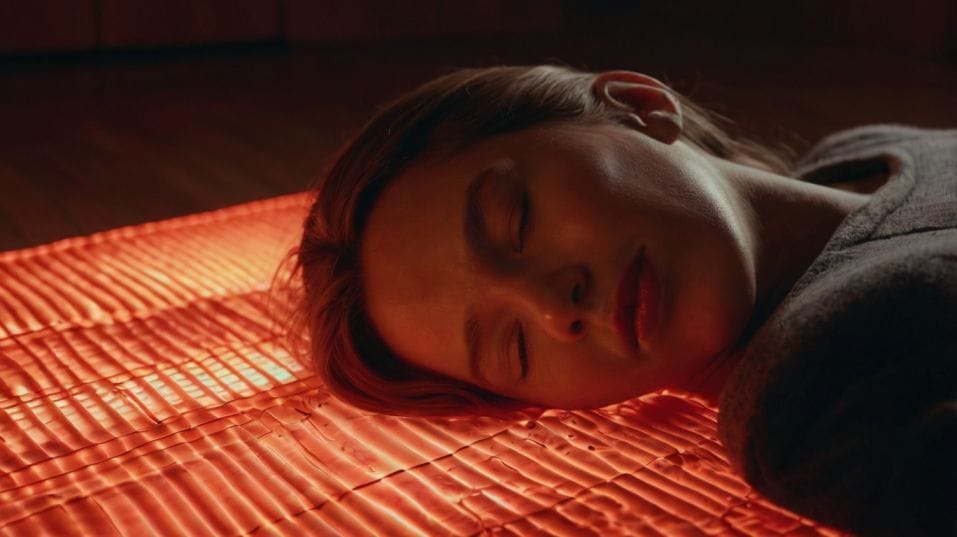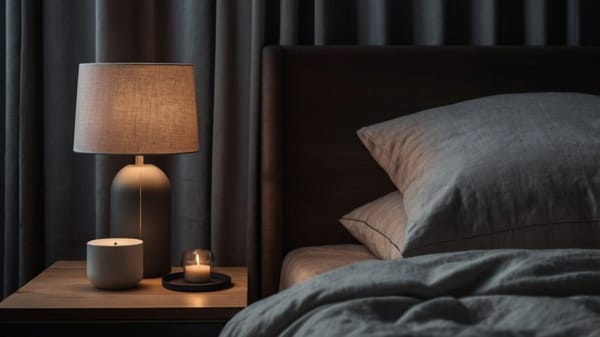How Infrared Mats May Support Rest and Recovery
Discover how infrared mats use deep heat to relax muscles, calm your nervous system, and help you fall asleep faster—no complex routine needed.

Ever wonder why you still feel wired or sore at night—even after doing everything “right”? Sleep routines help, but they can’t fix a body stuck in stress mode. That’s where infrared mats come in.
This low-effort tool delivers deep, soothing heat that relaxes muscles and resets your nervous system—helping you unwind before bed, not just during it.
Let’s explore how it works, why it matters, and how to make it part of your nighttime rhythm.
What Exactly Is an Infrared Mat?
Infrared mats are therapeutic pads that emit far infrared radiation (FIR)—a specific wavelength of heat that penetrates deeper than traditional heating pads. You don’t feel it on the surface as much as you feel it through your muscles.
FIR travels several inches below the skin, warming tissues from within, increasing blood flow, and triggering a cascade of physiological effects that help your body shift from “on” to “off.”
Most mats aren’t just heating devices—they’re often embedded with natural materials like amethyst, tourmaline, or jade.
These stones emit negative ions and mild electromagnetic frequencies when heated, which some studies suggest may amplify relaxation, reduce cortisol, and enhance mood.
The result? A tool that supports physical recovery and nudges your nervous system into a calmer state—perfect conditions for better sleep.
This isn’t some fringe biohack. FIR therapy is used in clinical settings to treat chronic pain, cardiovascular issues, and even autoimmune flare-ups. Its sleep-supporting benefits just happen to be one of its most useful “side effects.”

The Recovery-Sleep Connection
If you’re waking up stiff, mentally foggy, or low-energy—even after seven to eight hours in bed—your issue might not be time asleep. It could be quality. And quality sleep starts with quality recovery.
When your muscles are inflamed or your nervous system is in fight-or-flight mode, your body doesn’t enter deep sleep efficiently. Recovery and rest are linked. Here’s how FIR heat helps connect the dots:
Improved Circulation
FIR heat expands blood vessels (a process called vasodilation), which helps shuttle oxygen and nutrients to sore muscles while clearing out waste products like lactic acid.
This speeds physical recovery and reduces the kind of tension that keeps you tossing at night.
Nervous System Regulation
Infrared exposure activates the parasympathetic nervous system—the “rest and digest” mode that slows your heart rate, lowers blood pressure, and prepares your body for sleep.
This is essential if your mind races at night or you’re dealing with burnout.
Temperature Rhythm Reset
Your body needs to cool slightly before deep sleep. Counterintuitively, short-term heat exposure—like a 20-minute infrared session—helps trigger that natural cooling cycle.
Once the session ends, your body starts to cool rapidly, which mimics the sleep-onset temperature drop and helps you fall asleep faster and deeper.
How to Use an Infrared Mat to Improve Sleep
You don’t need to overhaul your life to make this work. The real value of infrared mats is that they slide seamlessly into your existing wind-down routine. They’re plug-in-and-go tools—no app, no setup, no noise. Here’s how to make it stick:
Set it up where you already decompress
On your bed, yoga mat, or recliner. Use it where you already read, stretch, or meditate.
Pair it with low-stimulation activities
Want to double down on the effects? Use the mat while doing light breathwork, journaling, or listening to calming music. Your brain will begin to associate that combination with winding down.
Start short and consistent
Begin with 15–20 minutes in the evening. Make it the thing you do right before brushing your teeth or after your post-dinner walk. Consistency helps train your nervous system to shift gears faster.
Use it pre-sleep—not during
The goal is to use the mat to signal your body that it’s time to shift into recovery mode. You don’t need to fall asleep on it. Let it prepare you for bed—then transition to sleep in a cool, dark room.
Over time, your body will start responding to the signal faster. Think of it like building a neural shortcut: mat on = body off.
Real Benefits, Backed by Science
You’re not just chasing a good nap here. FIR therapy has been studied for decades in both sports medicine and clinical recovery. Here’s what research has found:
- Muscle Recovery: A 2015 study in the Journal of Athletic Enhancement found that FIR reduced delayed-onset muscle soreness (DOMS) and improved muscle repair after intense exercise.
- Sleep Quality: A pilot study published in Psychiatry Investigation showed that FIR therapy helped improve sleep efficiency and reduced symptoms of insomnia when used regularly.
- Autonomic Balance: Research in the Journal of Physiological Anthropology observed that regular FIR exposure increased parasympathetic activity, which correlates with reduced stress levels and better sleep regulation.
You don’t need to memorize the studies. Just know this: the science backs what your body will feel—looser muscles, a calmer mind, and a faster drop into real sleep.
Who Benefits Most?
Infrared mats can help anyone looking to recover faster or sleep deeper, but you’ll especially feel the difference if:
- You train hard or move a lot during the day
- You sit too long or carry chronic muscle tension
- You deal with mental overstimulation or stress before bed
- You wake up frequently during the night or feel groggy in the morning
The best part? You don’t have to “believe” in it for it to work. This is tech doing what it’s built to do—support your biology with heat, light, and consistency.
Final Thoughts
Better sleep doesn’t always require a new mattress, a perfect schedule, or giving up your phone.
Sometimes, it’s about working with your body’s natural systems to ease into rest and recovery. Infrared mats offer a simple, science-backed way to do that—no fluff, no guesswork.
Start small. Set aside 15 minutes tonight. Plug in the mat, lie back, and let the heat do its work. When your muscles relax, your breath slows, and your brain gets quiet, you’ll know: this is what recovery should feel like.
Better sleep starts before your head hits the pillow. Start now—and make rest something your body looks forward to.




